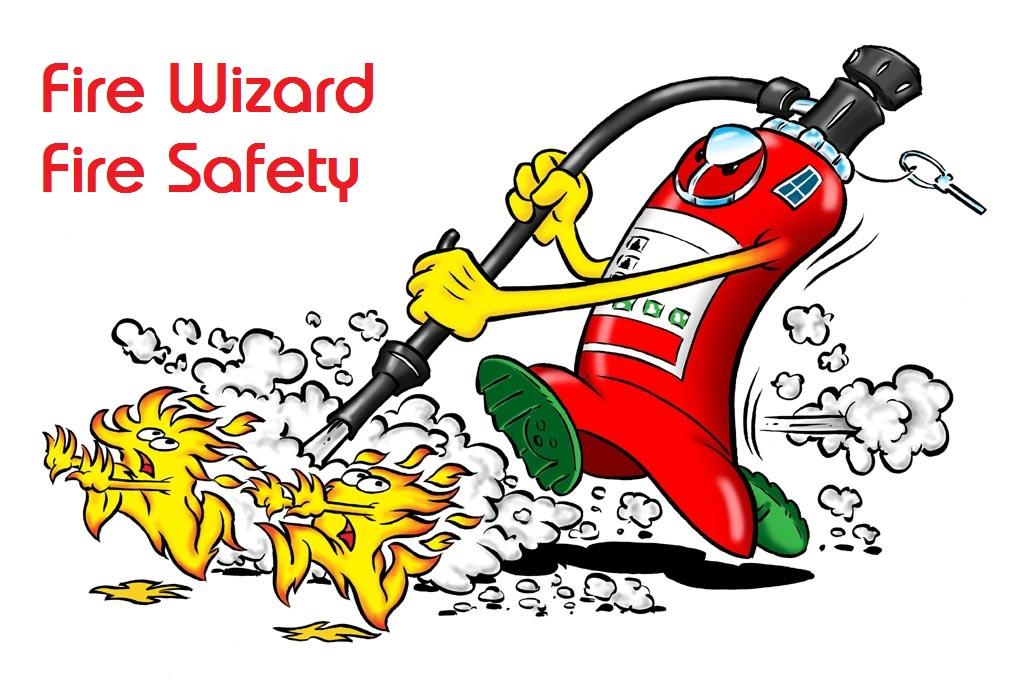-
Posts
2,703 -
Joined
-
Last visited
Everything posted by AnthonyB
-
It's fine, lots of houses only have one exit door. Shut your doors at night, make sure your smoke alarm works.
-

Fire extinguisher refurbishment, is it worth it.
AnthonyB replied to PaulRob's topic in Fire Extinguishers
The CO2 extinguishers can be overhauled at 10 years where they have the cylinder pressure tested and a new valve & dip tube fitted and then refilled - giving the unit 10 more years. Far cheaper than new (especially with the 5kg size, the cost difference between overhaul & new is far wider than with the 2kg) and far better for the environment as the carbon footprint of new extinguishers is awful considering the use of virgin raw materials and transport from China or (to a far lesser extent) Poland. The powders can be extended serviced and refilled too, although the cost saving is far less and it's more environmental benefit than anything, mainly because the powder has to be replaced. In most other countries (especially the US) the powder is removed using a closed circuit vacuum pump & hopper and if OK re-used meaning it is a fraction of the cost to keep in use for another 6 years (their refill interval) Cheap imports and lack of training mean many fire related firms 'box shift' and scrap perfectly good extinguishers at 5/10 years - when I started with extinguishers the idea of replacing at discharge test would have rendered you a laughing stock and 25 years wasn't unheard of for service life. The P50 is a good middle ground as you get 20 years out of them and they are 99% recyclable. -
Once you have gone through the doors there should be additional signage to direct people down stairs, the sign above the door relates to the door only. People went up at Grenfell not because of signs, but because they couldn't go down as the stairs were heavily smoke logged due to a catalogue of failings in the various protective measures in the building.
-

Escape Lighting Not Required in 2-Storey Flats
AnthonyB replied to Brad Parker's topic in Emergency Lighting
Current risk assessment guidance recommends it in flats as a lower priority. The emergency lighting standard would expect it as standard. As legally a fire risk assessment must have been completed this should consider this issue. -

How often do we need to certify emergency lighting?
AnthonyB replied to a topic in Emergency Lighting
Fire Alarm: 6 monthly with weekly call point testing Emergency Lighting: 12 monthly with monthly function testing -
Usually yes. Building Control will advise in your specific case as part of your approval submission.
-
Subject to risk assessment and the appropriate measures put in place it should be OK. BB100 design guidance for fire safety in schools will help you too as will other schools design publications
-
The reason is the usual shoddy workmanship of modern builds and yes it's a fire safety risk. The developer will try and claim it's fine as it has Building Control sign off, but that doesn't cover workmanship, just that the doors and walls are in the right place and this has nothing to do with the ongoing compliance of the premises under fire legislation. The last developer that tried this on my watch ended up having to give in when the fire service served an Enforcement Notice....
-
No it isn't (yet - may become so for High Rise Residential Buildings) but is still recommended. You could look for The BWF-CERTIFIRE Fire Door and Doorset Scheme or the similar FIRAS scheme.
-
Ideally yes
-
A 2kg CO2 shouldn't be a problem in a typical house room, but it is limited in scope to electrical fires. In the home you really want to have just one extinguisher that does everything which would usually be Water Mist.
-
You aren't going to get it in the legislation as it's functional and doesn't list individual requirements for compliance. The Housing Act governs fire safety as well and isn't limited to common areas. Article 14(2)(b) is the functional requirement in the Fire Safety Order that a fire door wedged on a protected route would breach. It would also be a hazard under the HHSRS scheme and thus enforceable under Part 1 of the Housing Act. If in doubt invite a multiple agency inspection team to visit and see what they come up with!
-
The Fire Safety Order is grey in it's ability to enforce issues in this area. Government Guidance is that the Housing Act (which covers all parts of houses and flats, owner occupied or rented) is used for enforcement. I've used Enforcement Notices under the Housing Act issued by local council EHO's for fire safety matters inside flats (doors, vents, floors, walls) that would affect the rest of the premises in the past where the Fire Safety Order is too weak.
-
Ideally there should only be one fastening, however thumb turns are commonly used in housing. The yale type lock is more of a problem as it looks like the type that can be key locked from the inside.
-
Here is the guidance: https://www.cieh.org/media/1244/guidance-on-fire-safety-provisions-for-certain-types-of-existing-housing.pdf Depending on the type and thickness and number of layers of board the existing plasterboard may be sufficient.
-
Depends what the detectors were there for - if part of a common system for full evacuate then heats is the normal provision because of the resultant false alarm risk which leads to vandalism and apathy to the alarm sounding - it would also be a Part 1 system. After all the system is not the for life safety of the flat of origin, that's what the local Part 6 systems to each flat are for. If It's a weird system where one system is trying to be both the common system and local system (not unheard of and common in HMO's and some conversions) then smokes are a must and hush buttons or Cause & Effect programming be used to prevent site wide false alarms.
-
It depends on what premises you are looking at, there is a lot of training and CPD needed to be a competent risk assessor, the NEBOSH Fire qualification is a basic entry level course.
-
If the house has been converted into commercial premises it won't be stay put (an individual flat or house isn't stay out anyway!) and should have a suitable fire alarm system and evacuation strategy. If the conversion went through the correct planning permission & building control process then you would have been required to install emergency lighting. You should also have a Fire Risk Assessment which would address all this.
-

Perko door closers on blocks of flats? Are they compliant?
AnthonyB replied to Keith's topic in Fire Risk Assessments
ADB is a design guide not a risk assessment guide for existing premises. Risk assessment guidance contains what you are looking for regarding Perkos For flats use: https://www.gov.uk/government/publications/fire-safety-in-purpose-built-blocks-of-flats For sheltered housing use: https://www.nationalfirechiefs.org.uk/write/MediaUploads/NFCC Guidance publications/NFCC_Specialised_Housing_Guidance_-_Copy.pdf -
Part 6 - but for Grade A systems it simply refers you to the Part 1 service regime (as it's the same kit)
-

Fire risk assessments following New FS act 21
AnthonyB replied to ACB's topic in Fire Risk Assessments
No, it means they have to be assessed as part of a Fire Risk Assessment. Doors and windows wouldn't automatically need to be fire resistant except in the situations they already would have needed to be (usually certain external balcony access situations). The walls will depend on their make up, building height and what other protective measures are present in the block (e.g. sprinklers, full evacuate alarms, etc), -
Which make of alarm, it sounds bizarre! You don't have smoke detectors where they could be affected by cooking, e.g. open plan to landing or doors open.
-
They are unlikely to require replacement based on age of install, third party certification & the related marking of fire doors isn't mandatory however many organisations are insisting on replacement in any case because they can't prove the history of the door (despite lack of self closers being the bigger fire door issue in Grenfell which kicked off all the current mania on doors). You can get several different visual styles of fire door so as to suit aesthetics of different locations (& also of different security grades) however it sounds like the HA is going for the simplest, plainest and cheapest doorsets it can get away with!
-
It depends on the paint, some normal water based paints don't lend themselves to surface spread of flame, others do hence the existence of fire retardant versions. The designer and their incumbent fire engineer will have produced a design fire strategy which will identify the requirements for that area and the principle contractor needs to select a suitable product to meet that. If it's an escape corridor there may be a need to meet BS Class 0/Euro Class B performance - the fire strategy should dictate this. Paint becomes more of an issue the more layers there were, if you were redecorating by painting over existing painted walls then this would be more of an issue than a couple of new layers on a plaster skim.

